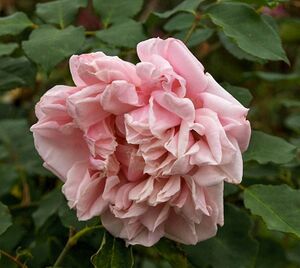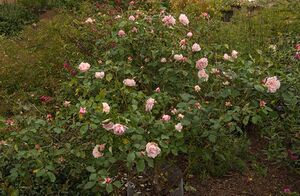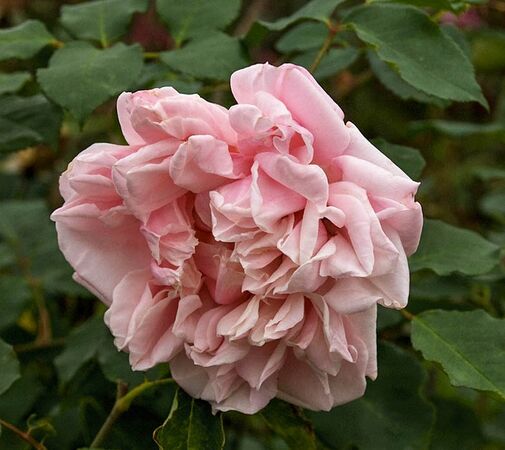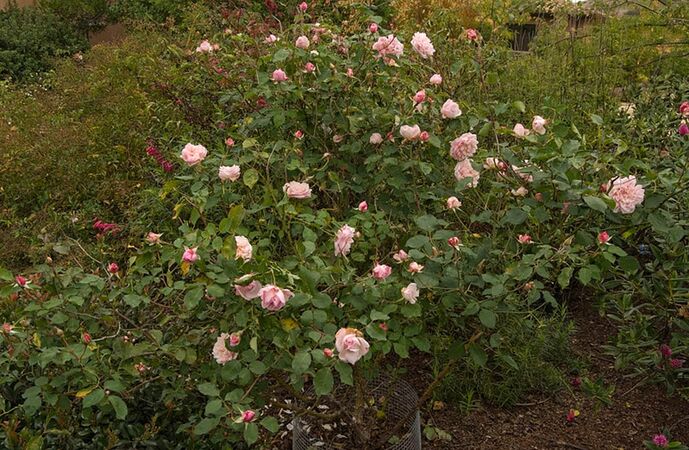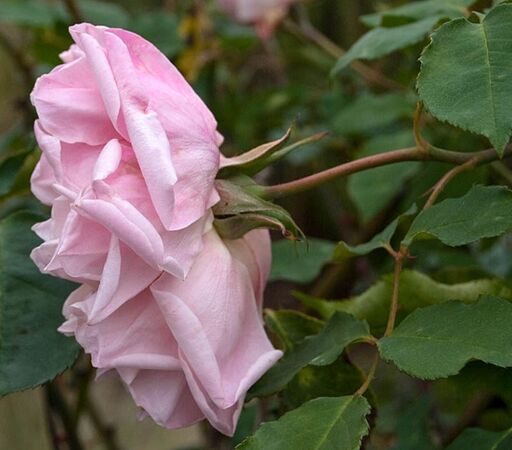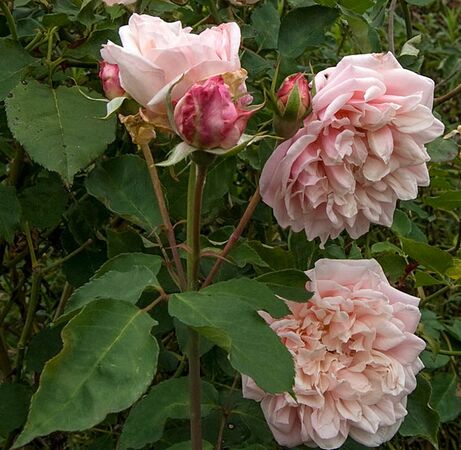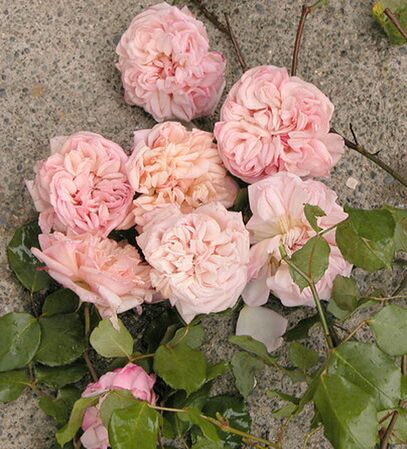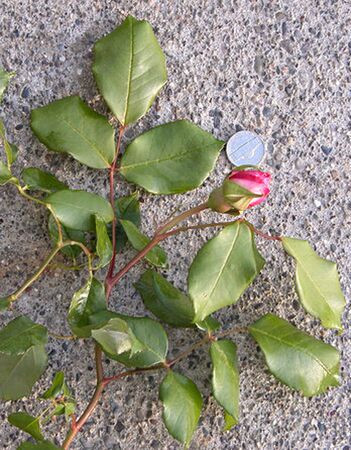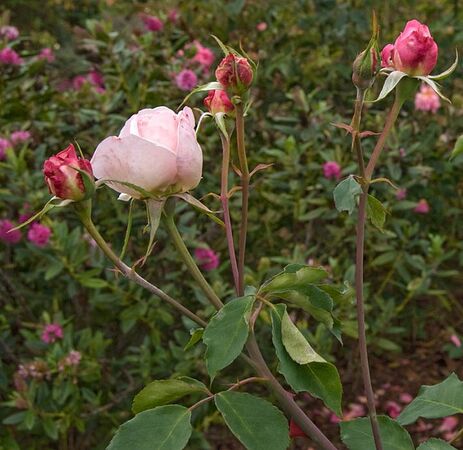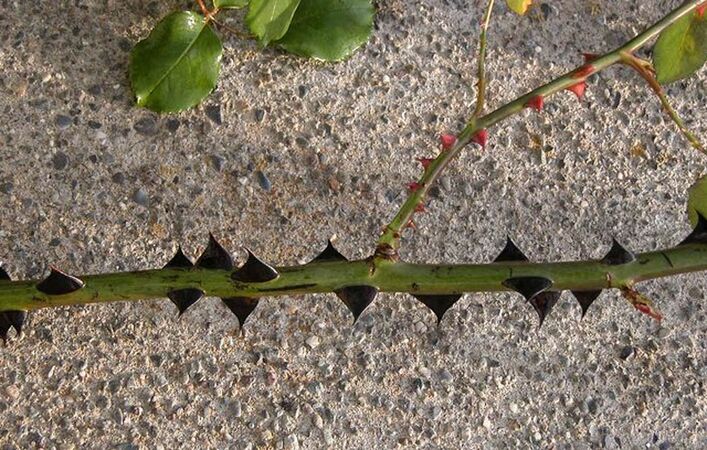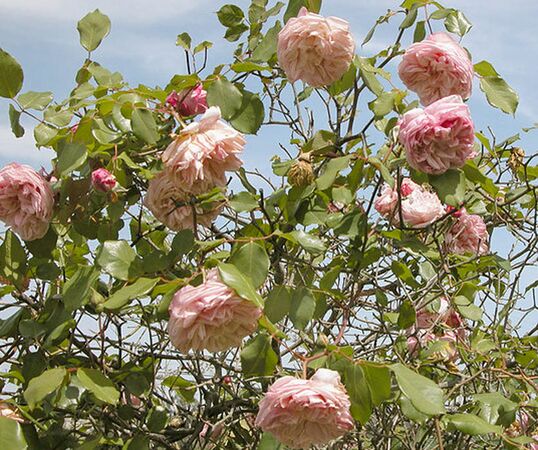Fundrose "Tamalpais Homestead Tea"
Teerose, 2004 - gefunden von / found by Cassandra Bernstein, USA
Eltern/parents/parentage: unbekannt / unknown
Allgemeines • Preface • Remarques
Zwei sehr alte Rosen wachsen am Zaun eines verlassenen Hauses in Mill Valley[1], Kalifornien, USA. Die meisten Häuser dort stammen aus den 1930er Jahren, aber dieses Haus wurde 1908 erbaut. 'Lady Hillingdon' wächst auf dem Grundstück, ebenso eine Rosa manettii Crivelli, 'Perle d'Or', 'Duchesse de Brabant,' und wohl auch eine 'Russelliana'. Die 'Tamalpais Homestead Tea' ist etwa 2,1 m hoch und besteht aus einem einzigen, sehr dicken, borkigem Stamm, obwohl eine der zwei Rosen 3 - 3,5 m breit war und auf einer Stütze oder am Spalier wuchs.
Two very old roses reside on the fenceline of an abandoned house in Mill Valley[2], California. Most homes on the street date from the 1930's, but this wood frame house was built in 1906. The high school across the street was built in 1908. 'Lady Hillingdon' is on the property as well as a Rosa manetti, 'Perle d'Or', 'Duchesse de Brabant,' and possibly 'Russelliana'. The 'Tamalpais Homestead Tea' are about 7 feet tall and consist of a single, very thick, barky basal, although one of the two plants is 10 to 12 feet wide and was grown on a support.
Blüten • Blooms • Fleurs
Mittelgroße (Durchmesser 8-10 cm), stark gefüllte, flach schalenförmige, im Erblühen gewölbte, etwas hängende Blüten in kleinen Büscheln. Die Petalenränder etwas zurückgerollt. Glatte Blütenstiele. Die Knospen sind dunkelrosa mit gestreifter Rückseite. Öfterblühend.
Medium-large, average diameter 3.75", very full, expanded, flat, nodding, cluster-flowered, old-fashioned, reflexed bloom form. The buds are dark pink with stripey reverse, nodding. Pedicel is smooth. Repeat flowering.
Farbe • Color • Couleur
Zartrosa in fleischrosa Schattierungen mit apricot, gelb-braun und creme übergehend.
Somewhat blush and fading to flesh shades of apricot, buff and cream. White fuzz appears on the insides of the sepals.
Hagebutten • Hips • Fruits
Wenige große, runde, gelbe Hagebutten.
Large, not numerous, yellow when ripe.
Wuchs • Growth • Port
Großer Strauch, H 2,0 m, B 3,5 m. Winklig verzweigte, sehr große Zweigstruktur. Vermutlich eine Kletterrose. Seitentriebe erscheinen wie bei diesen aus den gleichen Knoten. Die Mutterrose wurde vermutlich am Spalier gezogen, sie ist sehr alt und nicht mehr sehr wüchsig.
Plant size: 7' H x 12' W. Angular, branching cane structure, but very large. Possibly a climber. Laterals re-emerge from the same node, like a climber. The motherplant appears to have been grown on a trellis. It is very old and not very vigorous.
Blätter • Foliage • Feuillage
3- bis 5-fiedriges, leicht oliv-grünes Laub mit großen, lang-spitz ovalen, am Rand etwas gewellten, fein gezähnten Blättern mit Drüsen an den Zahnspitzen. Das junge Laub ähnelt dem von Teerosen, ansonsten sieht es eher modern aus. Das endständige Blatt ist oft zweimal so groß wie die Nebenblätter. Die Blattstiele tragen 3 oder 4 relativ große, sichelförmige, hakige Stacheln.
Foliage is very large, even relative to the size of the blooms. Quite large and modern-looking, somewhat olive green, although new foliage looks more tea-like. Terminal leaflet is sometimes twice as large as the bottom pair. Stipules have tiny teeth on the margins with glands on the tips, auricles thin and pointed. Petioles have 3 or 4 proportionately large falcate, hooked prickles.
Triebe und Bestachelung • Sprouts and spines • Branchage et aiguillons
Ausgereifte Stacheln sind dunkelbraun-rot mit sehr breiter Basis. Jung sind sie rötlich. Die Blütentriebe tragen nahezu keine Stacheln, hingegen sind die Grundtriebe besonders beachtlich bewehrt.
Mature prickles are dark brown to burgundy and dilated. New prickles are reddish. In general, the flowering wood has almost no prickles, while the really impressive armature is found on the basals.
Meine Rose • My rose • Mon rosier
San Francisco Bay Area
Bitte beachten Sie, dass der Duft mit der Tageszeit, der Temperatur und Luftfeuchte stark schwanken kann!
Eine Rose kann morgens Duftklasse 4 sein und nachmittags nur noch 1!
Please bear in mind, that the fragrance may intensely vary during the day, or by temperature or humidity.
In the morning it may be category 4, in the afternoon only 1!
Il faut savoir que le parfum d'une rose peut fortement varier selon le moment de la journée, la température et l'humidité de l'air.
Le parfum d'une rose peut appartenir, le matin, à la catégorie 4, et l'après-midi, à la catégorie 1!
| Duftkategorien | Categories of fragrance | Catégories de parfums | |
|---|---|---|---|
| 0 | kein Duft | no fragrance | aucun parfum |
| 1 | schwacher Duft | very mild fragrance | parfum léger |
| 2 | mittlerer Duft | mild fragrance | parfum modéré |
| 3 | starker Duft | strong fragrance | parfum fort |
| 4 | verströmt starken Duft | diffuses a strong fragrance | parfum à large dispersion |
My rose is from the motherplant and grows on it's own roots.
It grows in Mill Valley, the place is sunny with ubiquitous wind and fog , my soil is poor, thin, heavy and underlaid by bedrock.
The fragrance is moderate, better indoors.
>My rose has a tea scent.
- Tamalpais Homestead Tea
↑ Nach oben • Top • Vers le haut ↑
